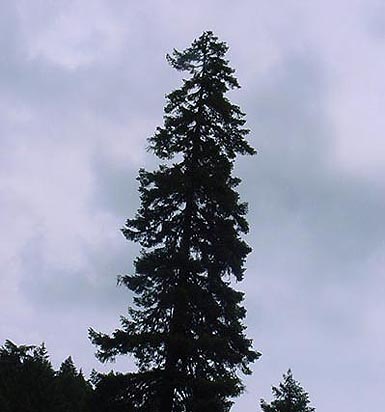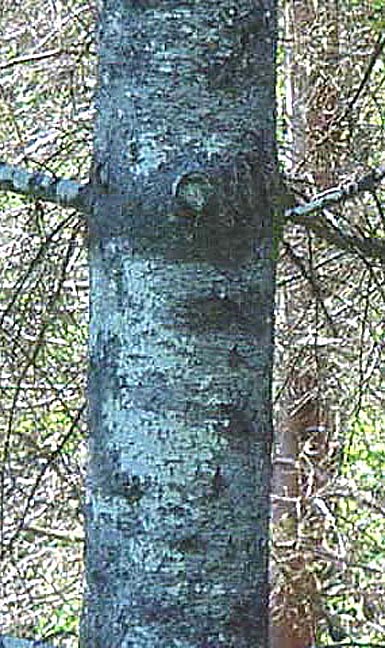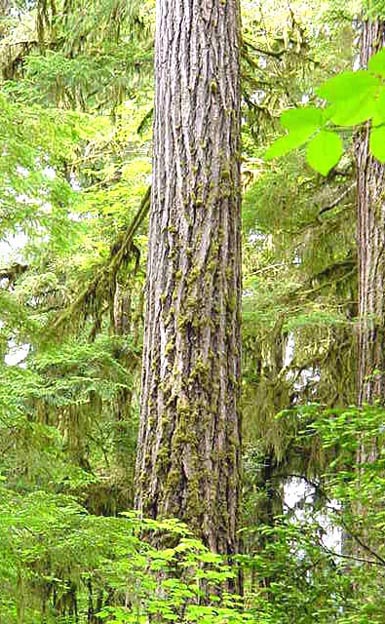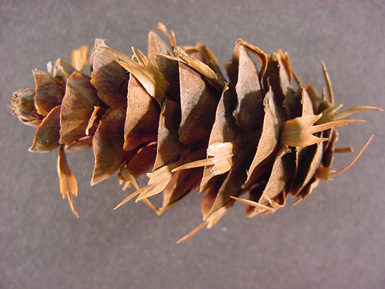Form: This is a large tree with a pyramid shaped crown.

Needles:
Arrangement: 2-ranked
Length: 3/4 - 1 1/4" long
Shape: blunt tipped
Other: yellow-green to blue-green; very fragrant
Bark: The bark is smooth and gray when young that becomes thick and reddish brown with ridges and furrows at maturity.


Cones: The cones are 3 to 4 inches long with rounded scales and have 3-lobed bracts that extend beyond scales.

Distinguishing characteristics: This species has two ranked needles, bracts on cones and smooth gray bark that turns red at maturity.
Range: This is a western species. It occurs between 2,000 and 10,000 ft., mainly along the coast or on rocky soils and mountain slopes.
Silvics: This species is intermediate in shade tolerance and grows best on moist deep soils of northern exposure. It can endure considerable drought conditions and self-prunes poorly.
Ecological and cultural importance: This is a major timber producing species in the western U.S. It is also grown and sold during the holiday season for Christmas trees.